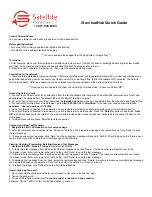
45
9
Control Protocols
The following section describes the control protocol employed on the
RS232 link for controlling the SOLO transmitters and receiver
equipment.
Connection details are detailed in previous sections.
Note that only features that are licensed for use in the SOLO units can be controlled. The
protocols listed here cover all possible features. Attempting to activate an unlicensed
feature will simply result in the command being ignored by the SOLO unit.
9.9 RS232 Control – General Principles
The physical interface is RS232 but this can be converted to RS 485
with an external adapter where multiple units are controlled over one RS
485 bus.
Normal operation involves sending a packet from the control device
(normally a PC) to the device being controlled. If the packet satisfies an
address integrity check, then the controlled device will action the
command and send a reply.
For compatibility with modems an ASCII style protocol is used.
Ports are set for 8 bits, No parity, 1 stop
9.10 Packet Structure Sending (from PC)
ASCII
Value
STX
02h
Start byte
0-9
30h-39h
4 byte unit address. In range 0-9999
R
20h-7Eh
1 byte command type.
r
read,
w
write or
m
misc
I
20h-7E
1 byte indicator of internal data block
ABC
20h-7Eh
Command –three byte mnemonic
;
3Bh
Separator
PQR
20h-7Eh
Data –Optional, variable length
;
3Bh
Separator
X
20h-7Eh
Sum Check
ETX
03h
End byte










































